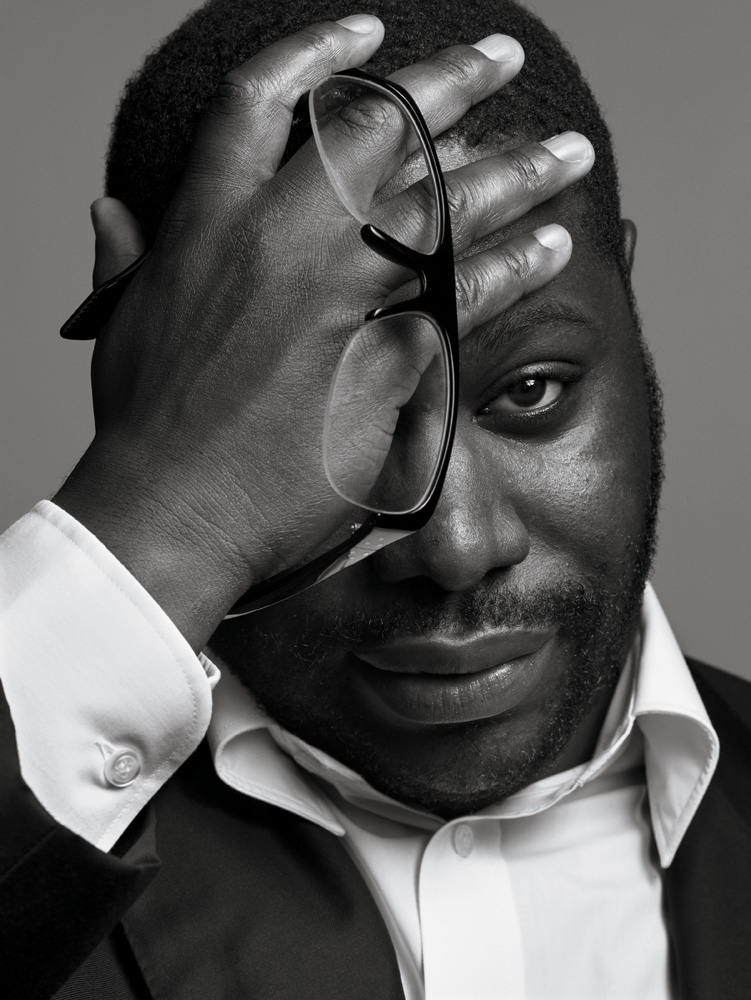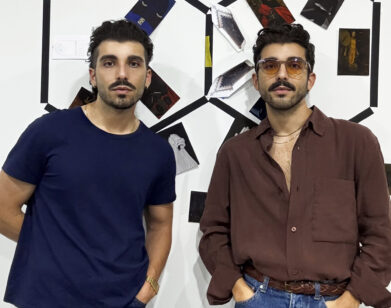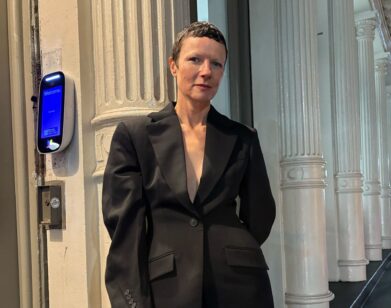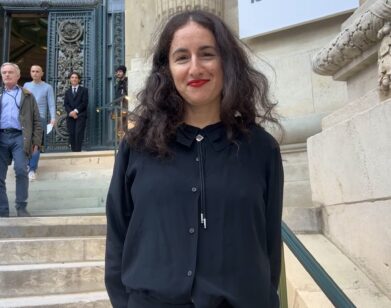Steve McQueen

Steve McQueen, who won Britain’s esteemed contemporary art honor, the Turner Prize, in 1999, recently directed his first feature. Hunger is a searing prison drama that won the Caméra d’or at Cannes last year and is being released in the United States this month. Even before the success of this venture, the 39-year-old London native has long been anacclaimed video artist known for not skirting around serious topics: Over the course of his career he’s addressed the legacy of colonialism, fallen soldiers in Iraq, and mining in the Congo. But his videos are so formally elegant and well-crafted and have such dramatic soundtracks that they’re less like political statements than they are honest assessments of the complexities of our world. McQueen now lives in Amsterdam, and his next project is representing Britain at this summer’s Venice Biennale.
DAVID COGGINS: Hunger is your first feature film. How was making it different from working on shorter projects?
STEVE McQUEEN: Well, there’s more crew. And that’s great, because there are all these experts there to help you make your film, from wardrobe to cinematographers to gaffers, and so forth. There’s even some guy to get you a cup of tea, and, when you finish it, there’s some guy to take it away. It’s brilliant.
DC: Working with characters and script and a narrative—was that a new experience?
SM: Yes, to a certain extent. Working with actors was amazing, especially Michael Fassbender and Liam Cunningham. It was amazing to create a situation of actors not acting or performing, but being. It was something I really loved doing.
DC: Can you describe what the film is about?
SM: It takes place in 1981, and it’s based on a true story of a situation that happened in the Maze prison in Belfast, Northern Ireland. Political-prisoner status was taken away from the inmates [IRA detainees], and they were deemed common criminals. So they decided to protest—which they did by not leaving their cells or washing. This came to be known as the blanket protest, or the dirty protest.
DC: There’s often a political theme underlying your work. Do you consider yourself a political artist, or are politics incidental to what you do?
SM: I’m dealing with people in certain situations and circumstances. Politics will take care of itself. I’m interested in people who are involved in the situations that politicians create. Politics is taken care of by politicians—they’re not filmmakers.
DC: What about Queen and Country [a 2007 project where McQueen created a series of facsimile postage stamps of servicemen and women who had died in Iraq]? Did that feel more provocative to you?
SM: I don’t know what’s provocative about putting dead servicemen on stamps. I think it’s the right thing to do. In Britain the only people who can appear on a stamp as portraits are members of the Royal Family or people who are dead. So who better to be on a stamp than someone who died for their queen and their country?
DC: A critic wrote that the film Gravesend [2007]—which includes extraordinary footage of miners deep underground [in the Congo], sometimes in complete silence—is “first and foremost about looking.” Do you think that’s true about your work in general? You use such powerful images—do you consider yourself a formal artist?
SM: I don’t think so, no. Formal? No, it’s not an exercise. This particular work has more formal aspects than others, but some works, like Western Deep [2002], are more organic. It depends on the context and content of the piece. As far as Gravesend, it’s about a mineral called coltan. Coltan is virtually everywhere, in every cell phone, every digital electronic device. It’s a conductor, this miracle mineral that doesn’t overheat. And the fact that the majority of it comes from this place in the Congo—this whole idea of going back to the source fascinated me. Going there was completely different from what I expected.
DC: Do you think your work gives a voice to people who aren’t in a powerful position?
SM: Not at all. I may bring attention to them, but really these are situations that I find interesting. These people can speak for themselves—there are documentaries, books written about the subjects. It’s not about me giving them a voice; it’s about me looking at their situations in a way that’s different from how other people look at them.
DC: Are your influences cinematic, or do they come from the art world?
SM: My influences come from real life. I’m not interested in cinema for cinema’s sake. I’m interested in life—what one does and how one interacts.
DC: Do you want to make another feature film?
SM: I’m still trying to get over this one. I’m astonished at how filmmakers do it. It’s like being with the same girl for five years. When it’s over, it’s not a case of going on to the next chick. It’s going to take a couple of years before I even think about making another film. But there will always be the residue of Hunger.
DC: How long have you lived in Amsterdam?
SM: I’ve lived here for 12 years—it’s a great city. And being with my wife and child has given me joy and allows me to pause and think.
David Coggins writes for Art in America. He lives in New York. Above: Steve McQueen in New York, September 2008.






